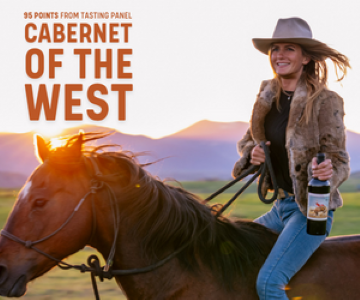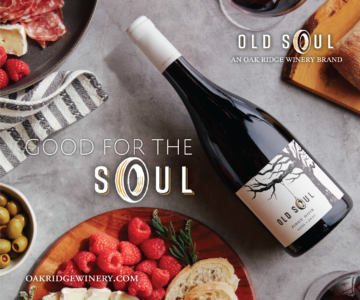
Super-Premium Tequila Mijenta Aims to Raise the Standard for Modern Spirits Brands
story by Courtney Schiessl / photos by Doug Young

“If you had a clean sheet of paper and were given total freedom to create a brand, what would you create?” asks Mike Dolan. “That’s how I approached Mijenta.” When he left his role as CEO of Bacardi in October 2017, he took some time to travel to Mexico, visiting not only Mexico City but spots more off the beaten path like Guadalajara and Oaxaca. Though Dolan was already a fan of tequila, the trip allowed him to see the country and its signature spirit through a new lens—and it sparked an idea for a brand that would serve as an “entry point into [Mexican] culture,” in his words. “What I like about tequila is the opportunity to tell stories,” he says. “Tequila is the keyhole into the world of real Mexico. ”Through a mutual friend, he met maestra tequilera Ana Maria Romero, and the two teamed up to craft an outstanding tequila founded on the pillars of community, quality, and sustainability that could serve as a true ambassador of its homeland. Now Mijenta has launched in the U.S. with two expressions, a Blanco and a Reposado, but that’s just the beginning for this up-and-coming producer of artisanal, super-premium spirits.
Building a Brand from the Ground Up

To make Mijenta a reality, Romero and Dolan traveled through the region of Jalisco to gain insight into the terroir. You can tell just by looking how distinct the highlands (los altos) are from the lowlands (el valle): In the latter, the soil is deep black, while in the former, it’s a rich, iron-y red.
This difference is reflected not only in the agave but in the resulting tequilas. In the highlands, the agave receives more sunlight, developing more natural sugar that in turn increases richness and mouthfeel in the finished spirit; the red clay soil, meanwhile, imparts fruit and floral tones. “They have very different taste profiles,” says Dolan. “The more you get into tequila, the more you realize the importance of terroir.” After choosing to focus on the highlands, Romero further narrowed her selection to individual rows of plants, pinpointing the best as the source for Mijenta.
This exacting mentality carried over into the distilling process, and because of Romero’s friendship with the distiller, Casa Tequilera de Arandas’ Miriam Lopez Montaño, the Mijenta team was allowed to be intimately involved throughout—a rare advantage in the category. “Normally the distilleries don’t like the master blender to come into their distillery,” says Dolan. “The relationship between the two of them allowed Ana unfettered access . . . throughout the process, so that was a great plus to us.”
Overall, Dolan and Romero opt for traditional production methods such as slow cooking and long fermentations to coax out rich flavors like vanilla, caramel, and honey. The tequilas are also unfiltered, which “lets you taste the real agave,” according to Dolan. The Blanco rests in stainless-steel vats for 45 days before bottling and the Reposado ages for six months in a blend of American white oak, French oak, and French acacia casks. “It began with great tequila,” says Dolan. “Everyone we talk to says the same thing: We love the taste. That is what is universal.”
A New Standard for Sustainability
From the beginning, the Mijenta team was also determined to integrate both environmental and social sustainability into as many aspects of the brand as possible, from sourcing to product packaging to the tequila itself, which is additive-free. All agave plants used for Mijenta, for example, are farmed without the use of pesticides, which is just as important to the health of the land as it is to that of the plants themselves.
As for the packaging, the bottle glass is locally sourced and the caps are enclosed in biodegradable plastic. Both the labels and boxes are made from agave waste at a local paper mill, and each label is affixed by hand rather than by a machine. While this means that the packaging may occasionally reflect tiny imperfections, Dolan prefers it this way. “That 5% of the time where the label might be slightly askew shows that this bottle was touched by a human being,” he says. “Oftentimes, [they’re] people—usually women—who wouldn’t otherwise have a job, and this brings in incremental income for them.”
Even if such practices are more expensive for the company to implement, Mijenta is determined to be a sustainability leader, raising the bar in hopes of driving a seismic shift among major players in the spirits industry. “A lot of the choices we made were ones that cost more,” says Dolan. “But if we can afford it, why can’t big companies? We have aggressively and consciously staked out a position on sustainability in order to set the standard that we hope others will follow.”

“Por La Gente”
It was important for both Dolan and Romero to make the birthplace of Mijenta—which draws its name from the phrase mi gente, or “my people”— intrinsic to its brand identity. “I didn’t want to simply produce an alcohol brand but something that was really reflective of the culture, the people, the arts of Mexico,” says Dolan. Take the strikingly modern label, which depicts the Jaliscan highland landscape, its pale pink hue a nod to the cotton candy–like color of the sky against the red soil; Dolan hopes it creates conversations about the place from which it comes and the people who make it.
Mijenta also has initiatives in the works to share elements of that culture with consumers in the U.S.; for instance, it’s sponsoring a young graffiti artist from Guadalajara to create art in both her hometown and Los Angeles. “It’s about giving North Americans access to better understand Mexico,” says Dolan, “and about giving access to North America to artists in Mexico who wouldn’t otherwise have the opportunity.”
The brand also works to support and give back to the community of the people who make Mijenta, particularly the jimadores who painstakingly harvest the agave. Dolan is adamant that all members of the Mijenta team are referred to by name, not just title, on the website and in marketing materials, and the company has also created a 501(c)(3) called the Mijenta Community Foundation; while its specific goals are still in the works—“We want to make sure the community is part of the process,” says Dolan—the foundation will likely focus on providing access to health care and other resources.
The idea to incorporate a philanthropic aspect into Mijenta was cemented when Dolan visited a small family-run distillery during one of his early trips to Mexico. When he asked via a translator what might be helpful for the local community, they didn’t know how to respond. “No one has ever asked us that question before,” he recalls them saying. “They only want to know the cheapest price.” Though such actions may seem unrelated to “having a great product or great branding,” Dolan acknowledges, “it’s an important part of the whole project. We’re trying to do something that does well by all the people involved—not just the people who are investors or owners.”

Launching Into a Prime Market
After launching its Blanco expression last September and the Reposado in December, Mijenta shows no signs of slowing down. An Añejo tequila is already aging in casks in Guadalajara, and a Cristalino is planned for release in late 2021 or early 2022; three mezcals made from three different agave species are also in the works.
Though the impact of COVID-19 on the on-premise sector changed the brand’s launch plan, Dolan has opted to see the necessary pivot as a positive. Rather than doing a traditional launch in a few states, Mijenta focused on e-commerce availability in as many states and countries as possible, with rollouts across Europe, Asia, and the Caribbean scheduled for the first quarter of 2021.
All signs point to this being an excellent time to launch high-quality, super-premium agave-based spirits in the U.S. market as well. Premium tequila in particular experienced breakout growth throughout 2020; in a November report, the IWSR forecasted strong growth for both tequila and mezcal through 2024, particularly in e-commerce channels.
“There is a growing appreciation for better, more refined tequilas,” says Dolan. “As people are becoming more sophisticated about tequila, their standards are rising.” He likens the phenomenon to the evolution of the whiskey category that began roughly a decade ago, when more consumers made the move from blended expressions to single malts that speak to their place of origin. “Now consumers are looking for the [tequila] equivalent of the single malt,” adds Dolan. “They want to know exactly where it came from, what the story is, and what makes it unique. That’s what we are benefiting from right now.”

